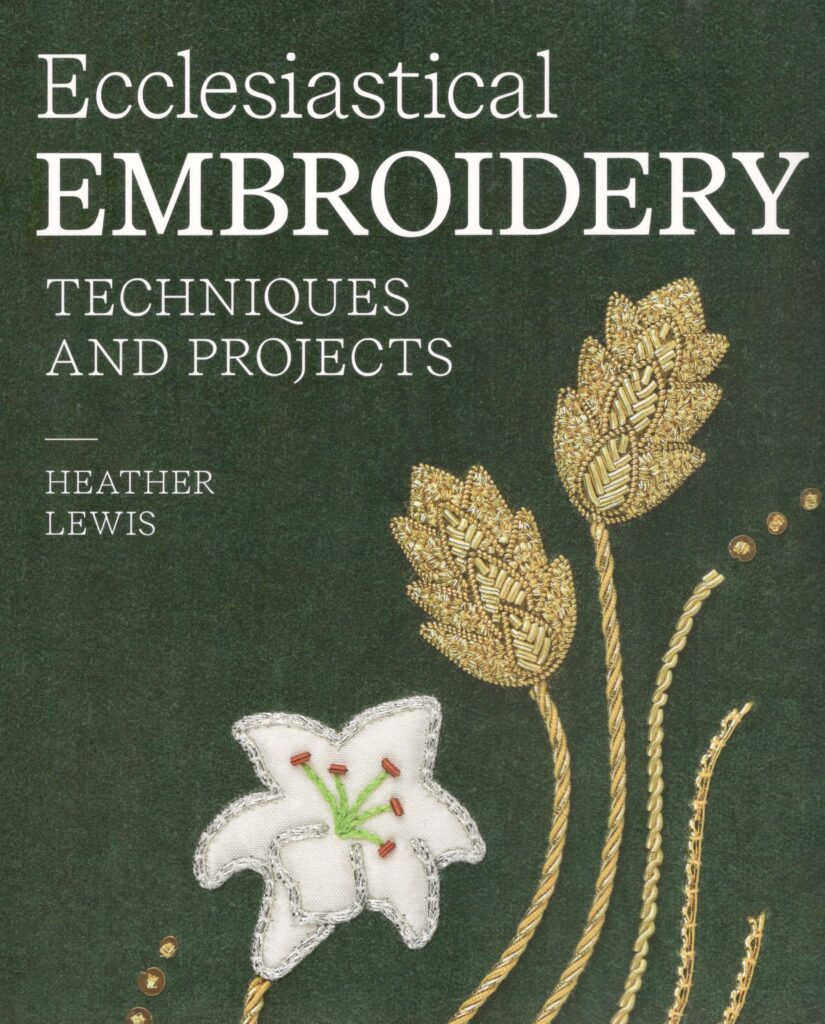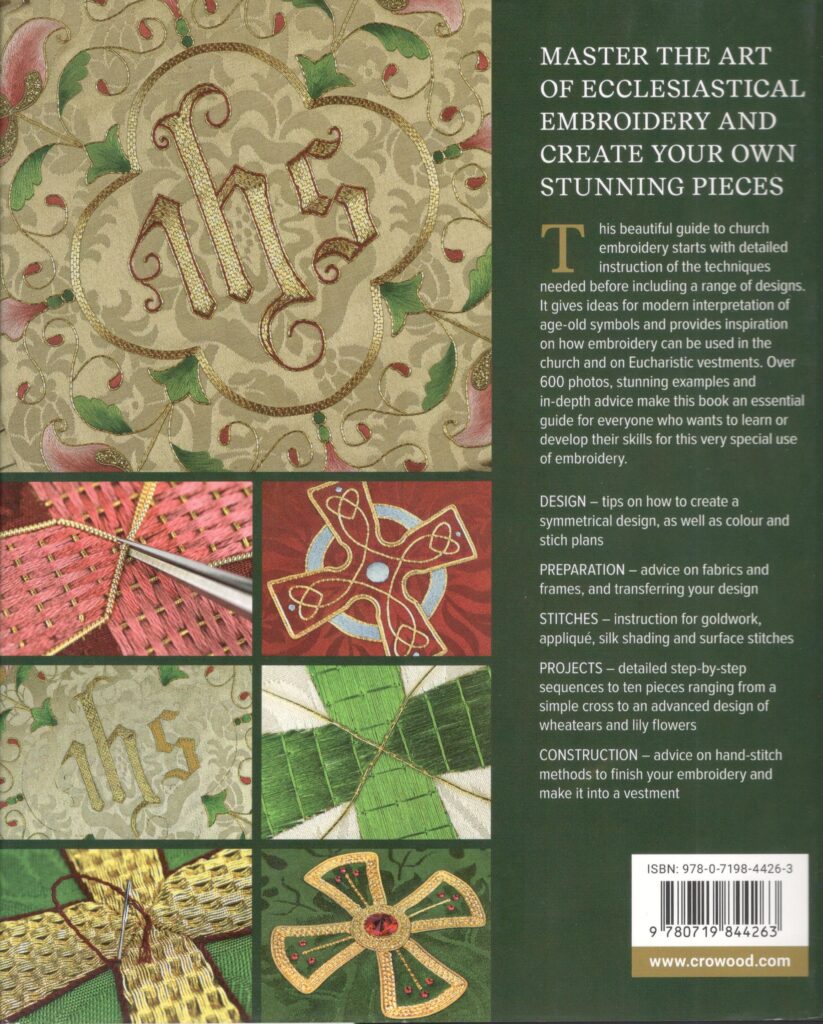Mary Corbet’s enthusiastic book review of “Ecclesiastical Embroidery Techniques & Projects” by Heather Lewis prompted me to order the book through my local bookstore. Check out Mary’s blog for an inside look at the book. I finally got the call yesterday that the book had arrived. At €42,50 it isn’t cheap, but still good value for money for a hardcover book. So, do I agree with Mary? Yes and no. And here comes my book review.

Whilst I appreciate that the (historical) background of a practical embroidery book can not be very thorough, I still expect correct information. In this case, these parts of the book are simply badly written. Let me give you a few examples.
In the short section “A brief history on ecclesiastical embroidery’ Heather does not make it clear when she is writing from a UK perspective and when she switches to the “all of Europe” perspective. This leads to such erroneous remarks as “Very little ecclesiastical embroidery was produced during the sixteenth century”. She is also clearly not proficient in underside couching, as she simply copies the wrong statement you can find in the works of Monnas and Christie. No, underside couching does not keep the resulting embroidered fabric pliable. It gets as stiff (probably even slightly stiffer!) as when you use surface couching.
But the one that had me chuckle is the statement that a cope “… is fastened at the neck with a large clasp, known as a morse …”. Right. The leading cause of death amongst clergy men is being choked by a cope in a religious procession. We have seen it happen many times :).
Another statement that has me puzzling is this one from the “Embroidery Design” section. “From earliest times, signs and symbols were incorporated into Christian decoration, and church embroidery was no exception”. Uhm, no. The majority of the earliest church embroidery is repurposed secular stuff. Not a cross, Chi Rho or dove in sight.

Okay. That was the book review for the general section of the book. What do I think of the practical embroidery information given? It is good—many detailed pictures and sound advice. But. Yes, there’s a but here too. Whilst the book repeatedly states that it stands in a very long tradition, it actually doesn’t demonstrate that in the practical part. This is ecclesiastical embroidery as taught by the RSN over the last 150 years or so. And that is absolutely fine. But it has very little to do with the bread and depth of church embroidery as has been, and still is, practised in Western Christianity. Ignoring the wealth of information that can be found in medieval originals seems a bit of a waste to me.
What does this practically mean? The RSN method of teaching goldwork embroidery includes a lot of plunging. From the perspective of a medieval embroiderer, that’s mostly a lot of unnecessary extra work. When I learned, and later worked, at the RSN, plunging was seen as a necessary step to anchor the tails of your threads. Simply oversewing on the front was not deemed secure enough. Travelling with a gold thread or a padding thread on the back of your work was something close to a dead sin. Yet, all this can be seen in medieval goldwork embroidery. It has stood the test of time.
To conclude my book review of “Ecclesiastical Embroidery”, I still do think you should buy the book if ecclesiastical goldwork is your thing. To learn about the history of church vestments, you are better off reading “Clothing the Clergy” by Maureen C. Miller. And now for the bragging bit: keep reading this blog for sound information on both the academic and the practical side of medieval goldwork embroidery!

Thank you for this balanced look at this book. It was very helpful.
Thank you, Cindy! I am always a bit unsure if I should write a review when I am not as positive as others.
Thank you for the review. I prefer an honest opinion rather than sugar coating… Now to see if I can find the book to add to my shelf.😁
Thanks, Beth! I do too :).
Wow — that is very helpful. I believe I’ll still purchase the book but write in a caveat with notes refering me to this post.
Yes, it is still a useful book. Just not the gospel on the matter.
Thank you for the balanced review!
With your knowledge and what you are seeing on the European mainland, I hope that some day you will publish a book on medieval embroidery with chapters devoted to the goldwork. I think it’s time for the world to be updated, as you so well pointed out in the myth about underside couching. Thank you for your keen eye!
Thank you, Debra! I won’t write a book. Had to do that as an archaeologist and I don’t like it one bit :). However, it will all be documented here on the blog. And maybe in an academic article or two.
Thanks for the book review. It is always interesting to read your perspective.
Just makes me wonder as well how many copy paste mistakes are out there, even by the professional embroiderers.
Your comment about plunging made me smile. That is how they teach trailing as well and I never understood why this extra step is necessary when the threads are completely covered. In addition it creates this awful bulge at the back side, maybe I am making some kind of mistake. But the back should look as good as the front. Except of course for the medieval embroidery, as you have shown.